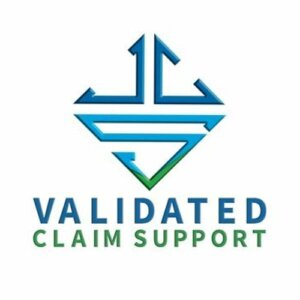The Pandemic Paradigm for Claims by Validated Claim Support
12 October 2020
The Pandemic Paradigm for Claims
As some businesses gear up to reopen with at least partial “on-site” attendance, it’s very important to look ahead and begin to assess what additional challenges the COVID-19 shutdown will have on the Personal Care industry throughout reopening. With all of the essential on-site only and distancing requirements, shipping delays, formulation setbacks, and awkward zoom meetings that have arisen from the stay at home orders, it is more important than ever to remain vigilant and proactive. In many cases this will lead to some compromises when it comes to claim support and consumer testing, and it’s extremely important to consider study designs that will be the best fit for the global consumer as well as the labs who help you support your claims.
We’ve compiled a list of some of the most “difficult” claim support scenarios in the current environment, as well as some alternatives which can hopefully serve as a stopgap when it comes to immediate launches and necessities:
Clinical Photography
When it comes to before and after imaging and clinical photography, most CROs and many sponsors have third-party photography solutions which share a common theme: reducing the variability of panelist or volunteer motion and position while maintaining a stable ambient environment.
Here’s the problem: How do you sanitize the inside surfaces of a highly sophisticated imaging system that’s designed so that it’s nearly impossible to be wiped down properly under the current circumstances? How do you regulate and cleanse the air pocket within the device itself, where panelists are expected to place their heads and breathe? Until further research can be done on the airborne “stay” of the pathogen of the moment, it is highly risky to ask multiple people to put their heads inside of the same box in a relatively short period of time. Even with proper sanitization, the nature of this work involves multiple people and timepoints in close proximity. According to the CDC, the virus is spread as an aerosol, and along with the potential harmful vapors of cleaning products in a confined space, these factors pose a substantial risk to panelists’ health.
In the short term, the solution is to utilize alternative means of imaging and before and after photography wherever possible. Full sized clinical studios (with some modifications for panelist and technician/photographer safety) can be implemented immediately to meet or exceed all COVID guidelines. Panelists can acclimate safely and comfortably in an open space while abiding by social distancing. . . All without any risk of vapor inhalation or direct contact transfer. Relevant surfaces can be sanitized as per standardized lab/office common space principles.
Duration, All Day, and Extended Wear Claims
Historically these claims pose a major onsite challenge since they involve dozens of panelists and respondents occupying the same temperature and humidity-controlled environment for an extended period (often 6-12 hours), and often the products being tested are facial. Another consideration is the use of masks, since the results using an undereye serum or a foundation adhering to study instructions will be inherently affected by the continued use of fabrics near or around the treatment site.
In addition, humidity-controlled environments tend to recirculate internal atmosphere in order to maintain their ambient thresholds. In other words, the air in the room is less filtered and mixed less with fresh replacement from outside than in a traditional lab or office space.
The short-term solution is to find alternatives which rely more heavily on in-use and user testing. Since these “all day” claims don’t tend to have an official regulatory monograph, it is more important than ever for sponsors to keep an open mind. As CROs, we’re all going to be maximizing our spaces in order to meet both demand and social distancing requirements. If CRO’s and sponsors work together toward a common goal, there will be a more than adequate solution we can agree on combining clinical control and panelist safety.
Takeaway
While there are several compromises which will have to be made in the foreseeable future, in most cases there are numerous alternative methods to carrying out label claim testing. While this doesn’t always hold true with monograph or regulatory claims, it’s still possible to schedule successful product launches outside of these realms by working hand in hand with your trusted claim support lab.
Perhaps the biggest outlier and another major headache which we did not mention is Sunscreen Testing. In the short term, we are still patiently waiting for the delayed federal review and publication of new guidelines.
It is of paramount importance to understand that the safety of the global consumer as well as the technicians and test subjects who help get products to market must be of the highest priority. For the good of greater good of everyone both in industry and on the end user side: please ensure to always use a compliant, validated and forward thinking CRO.
info@validatedcs.com








 Follow us on Linkedin!
Follow us on Linkedin!
You must be logged in to post a comment.